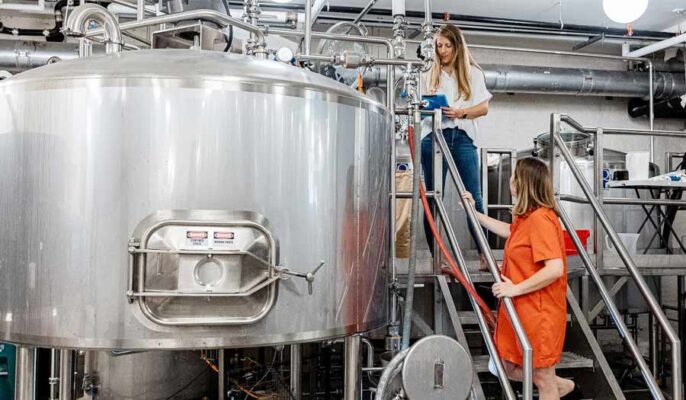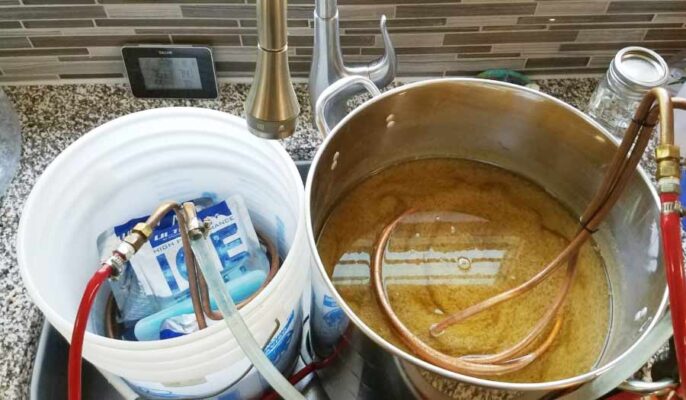Beer has been around for thousands of years, and the brewing process has evolved. Today, modern breweries use advanced technology to brew the perfect beer. The key equipment of the brewery is the brewery. In this article, we’ll explore what a brewhouse is, how it works, and its components.
What is a brewhouse?
Mashing is at the heart of any brewery, where beer is produced. It is a facility that combines several processes to produce wort, the liquid extracted from the mashing process. This liquid contains sugars that will ferment to produce alcohol. A brewery usually consists of several components including mash tuns, lauter tuns, kettles, and whirlpools.
The brewhouse contains all the components needed for the brewing process. Depending on production needs, physical dimensions, and scale of operation, breweries can be customized for each buyer. Brewhouse is the name of the room used for brewing, but the word is also used for the vessels in which the hopped wort is made for fermentation.
What are the different sizes of breweries?
Depending on the scale of production, breweries are built on a case-by-case basis to produce a specific amount of beer. Smaller home brews are attractive to those who produce small amounts of beer.
The size of the brewhouse depends on your production capacity and the size of your facility. Typical units of measure for brewhouse systems and vintage beers include:
Beer Barrel – BBL, Gallon – GAL, and Hectoliter – HL.
1BBL = 31 GAL, and 1 HL = 0.85 BBL

What kind of containers are there in a brewery?
The mash tun is where the grain is mixed with water to extract the sugars needed for fermentation. The lauter tun is used to separate the liquid from the solids, while the kettle is where hops are added to the wort for flavor. A whirlpool is used to remove any remaining solids from the liquid. Other components of the brewhouse may include heat exchangers, pumps, and piping to move liquids between vessels.
Mash Tuns / Lauter Tuns
A Mash Tun/Lauter Tun is a vessel used to mash malt sugar and hot water to make wort (unfermented beer). A mash tun is a vessel in which mashing takes place and the wort is separated from the grain. Depending on the size of the production, brewpubs, and breweries may use mash laurels with a capacity of 100 gallons or more. Most saccharification and lauter tun vessels are made of stainless steel.
Brew Kettles and Whirlpools
Brew kettles, also known as boilers, boiling kettles, or copper kettles, are containers for boiling mash to a certain gravity and adding hops and other flavorings. The boiling process allows various chemical reactions to occur including wort sterilization, the release of hop flavor, the concentration of wort, the release of bitter and aroma compounds through isomerization, and the stopping of enzymatic processes.
Mash barrels and beer jugs
Usually made of stainless steel or copper, depending on the brand and manufacturer. As with the entire brewing process, cleanliness and hygiene are essential, so stainless steel and copper materials are easier to clean. Brewing jugs range in size from 50 liters to 1000 liters (or larger) and are usually measured in BBL production capacity, ranging from 1-5 BBL to over 50 BBL.
Heat exchanger
A heat exchanger, also known as a wort cooler, is a mechanism that allows you to cool your wort from boiling temperature to yeast fermentation temperature in time. Immersion coolers, plate, and counterflow wort coolers will exchange or reduce heat to help improve the clarity of the beer and reduce the chance of off-flavors and contamination.
fermentation vessel
A fermentation tank is also known as a fermenter. Yeast is poured into the wort and converted to beer. The wort is pumped through a heat exchanger into this vessel and then added to the before inoculated yeast, where it can begin fermentation.
Brewery process
The mashing process begins with grinding sprouted grains and adding them to the mash tun. Hot water is added to the grains and activates enzymes that break down starches into sugars. The liquid is then transferred to a lauter tun where it is separated from the solids. This liquid, now known as wort, was then transferred to kettles, where hops were added for flavor. The wort is then brought to a boil and vortexed to remove any solids. The final product is then sent to fermenters to ferment into beer.

How a mash tank works in a brewery
The brewing method is also related to the quality of the malt, so before buying malt, check further with the supplier to see which brewing method they recommend.
grind grain
At the distillery, different types of malt are crushed together to break up the grains to extract fermentable sugars to produce a milled product called grain.
mash conversion
The flour is transferred to mash tuns where it is mixed with hot water in a process called mash conversion. The conversion process uses natural enzymes in the malt to break down the malt’s starches into sugars.
filter
The mash is pumped into a lauter tun where the wort is separated from the chaff.
boiled
The wort is collected in containers called kettles, which are heated to a controlled boil before the hops are added.
Wort separation and cooling
After boiling, the wort is transferred to a vortex for the wort separation phase.
fermentation
To start fermentation, yeast is added when the container is filled. Yeast converts the sugary wort into beer by producing alcohol, flavors, and carbon dioxide.
Things to Consider When Opening a Brewery
- You’ll also need to rent or buy a building to house your brewery.
- Buying small or medium equipment, especially used equipment, can save you money.
- Breweries must strong laminate floors to withstand temperature, shock, and spills.
- Apply to the government for a brewing license
- Get a Liquor License
Open your brewery
In conclusion, the brewery is an essential part of any brewery and it is here that the magic of brewing beer happens. The various components of a brewery work together to create wort, which is then fermented into beer. Breweries vary in size and volume, but all strive to produce the perfect beer. If you are interested in this, you can contact the micet group. We will provide you with professional brewery customization solutions.




